The Magic of Simplicity – An approach to shooting skateboarding
by Philipp Schuster
Skateboarding can be divided into two basic approaches. On the one hand there is park skating: athletes use optimized structures that are especially made for skateboarding on dedicated locations. On the other hand there is street skating: it’s philosophy is to use the “natural“ topography of a city and to interpret urban structures with an individual approach. Skaters get lost in the concrete jungle and cruise from one spot to the other all day long.
Even though there are many stages in between, this rough distinction also works with photographing skateboarding: one approach is to build up a shooting concept where you control the scene and the light. The other is to let things slide, to use the available light and to allow unpredictable conditions to influence your shooting style.
It’s a difficult task to transport the mood and rawness of the streets to a public of non skaters. But photography is a very endearing media that facilitates that to a broader audience – the possibilities and the variations are endless. There is an authentic match between the lifestyle of street skating and the adaptive shooting style that developed a hundred years ago. The magic happens when the camera captures part of the skate life and brings the beholder of the final image closer to a vibrant urban experience.
The lighter and more accessible a photo bag is the better: stopping at a road gap, grabbing the camera, hitting the trigger (and having the ability to store it within seconds as soon as the police show up), and then keeping on following your nose to the next spot in the area. Flexibility is key and being that flexible helps you to keep on moving and to discover new spots and locations that you wouldn’t ever find whilst lugging 20kg of flash equipment on your back.
The worst light is always the same light. Changing seasons inspired musicians and poets to create exceptional pieces. Sometimes you cross a boring spot that gets interesting for five minutes only because of an exciting light reflection – and again: skater and photographer are ready within a minute to capture this rare moment. The key is to go with the flow of the session and to keep up with the opportunities the street offers.
Skateboard photography can be a very demanding field: fast action and uncertain shooting conditions ask for high technical standards. Nowadays those standards can be found not only in top of the line equipment, but also in entry-level gear, but because of the breath-taking array of equipment possibilities the most important ingredients of a good photograph sometimes takes a back seat: the soul and the personal signature of the photographer himself and that all important touching story. Something no technical gadget can replace.
So really, what more do we need to tell exciting stories in the history of urban life, and to be able to freeze those now-or-never-situations. A small camera body, our favorite prime lens, a skateboard, a good session and some soul. What more?
Web: www.trottoir-media.com, www.redbullphotography.com
Instagram: @_philippschuster

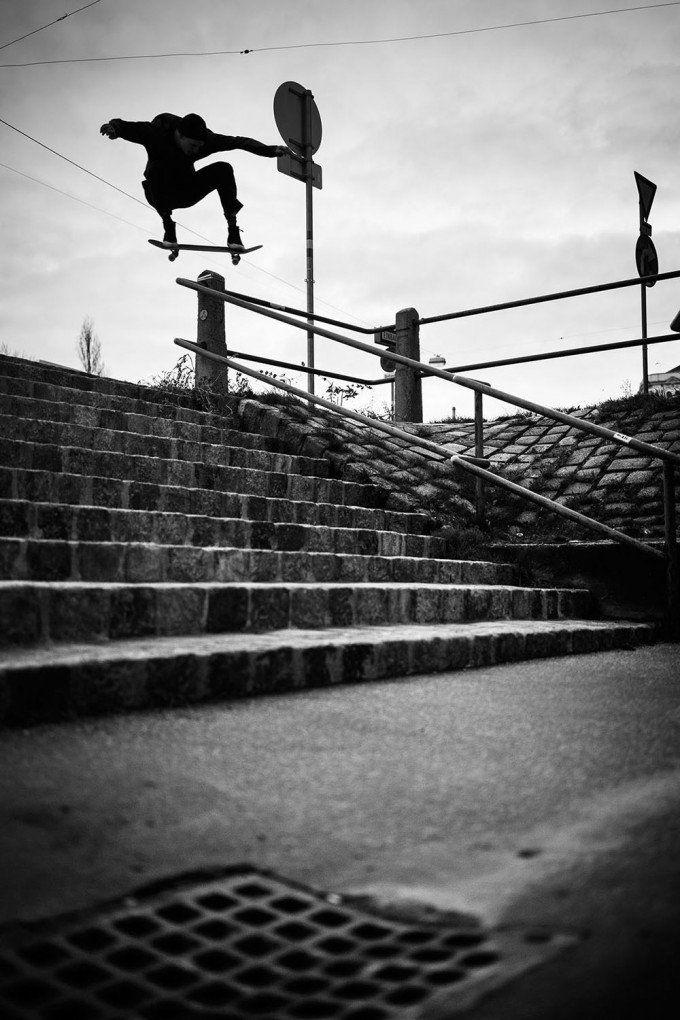

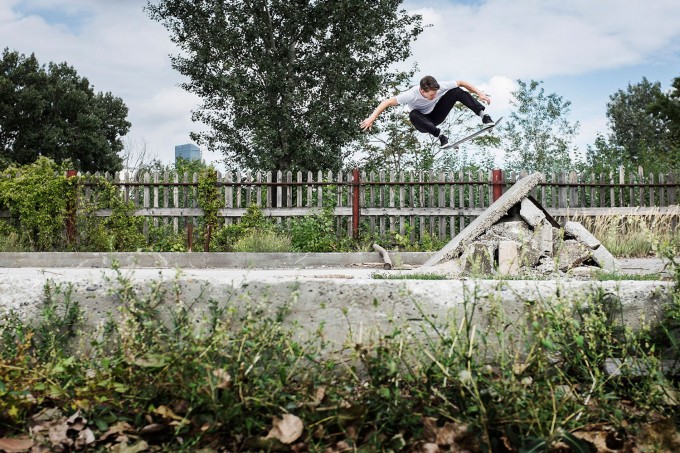
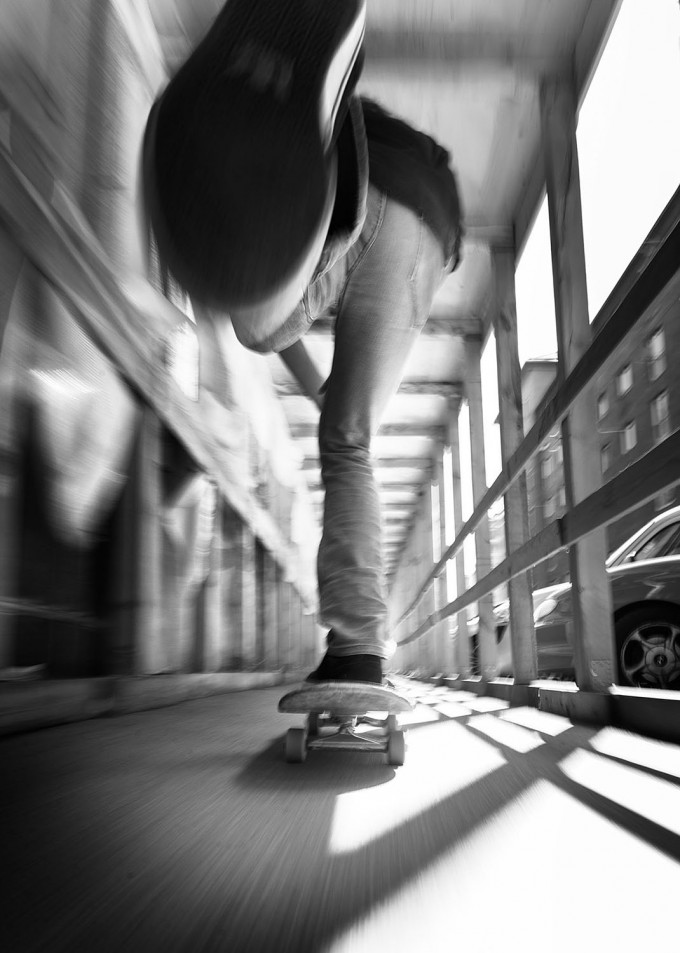

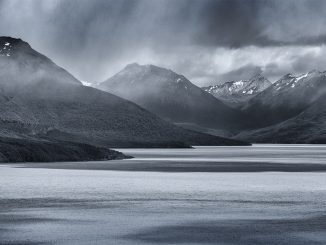
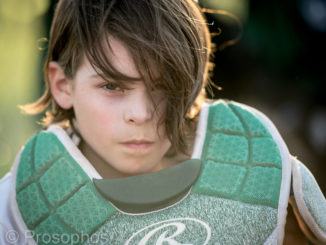
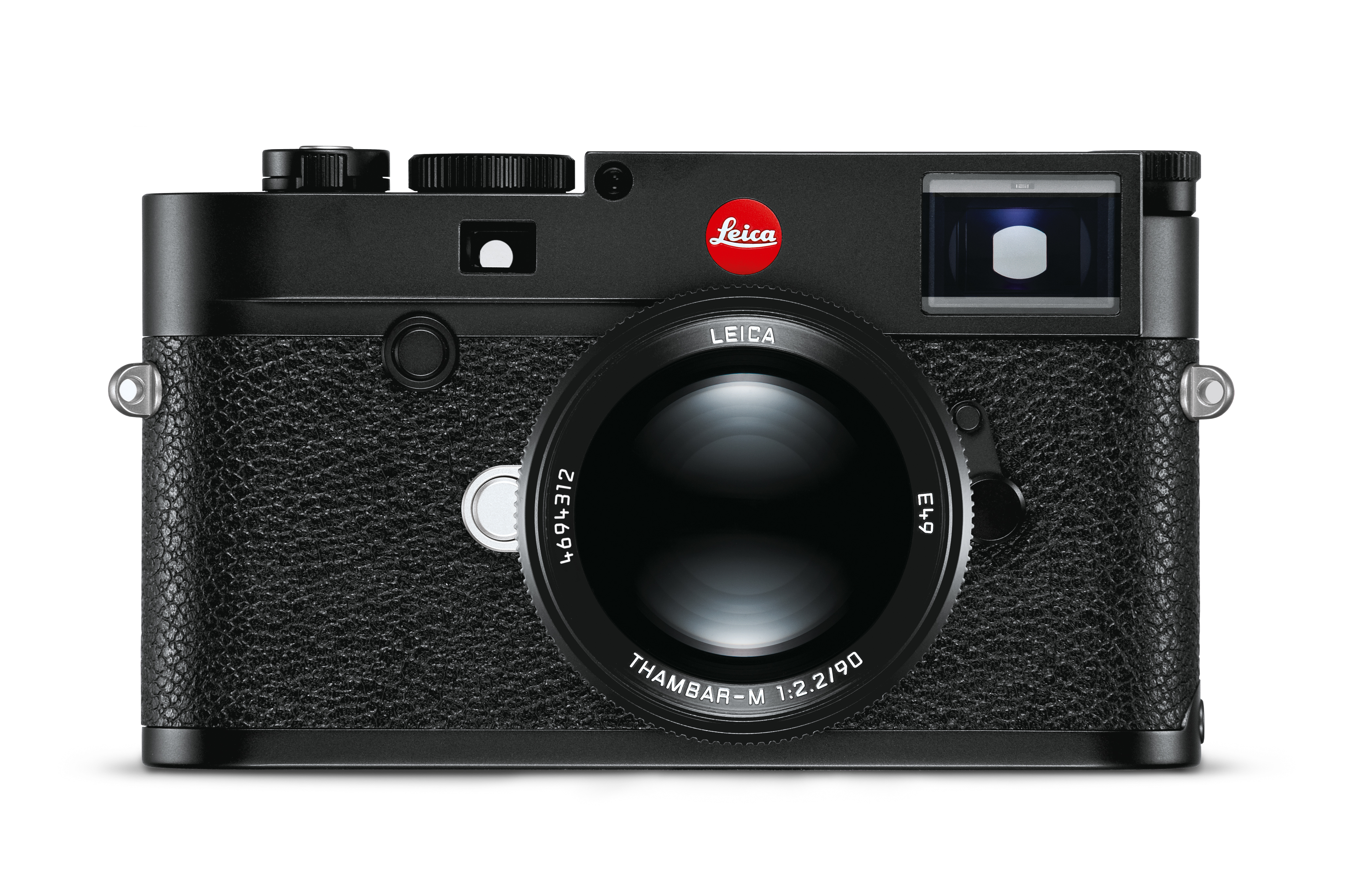
Thanks Steve for posting my article – I’m hyped!
Come on now….don’t be so literal. It’s obvious that “what more?” was a rhetorical question, it wasn’t a request for a suggestion on “what more should I bring/do in order to make this better looking for you”.
And the 20kgs is again an hyperbole.
I agree on the slight overexposure and a potential better framing, although I quite like the water canal in opposition to the cement.
Go figure, the “really nasty grate” is exactly what puts me inside the shot as it gives me that wide angle blurry look so familiar in the skateboarding videos.
Interesting observation on the wheel thing.
All that said, the pics alone would have probably had less power than they have once joined by the text. But then again, we do have the combination of both, and it works so well.
So I guess we partly agree and respectfully disagree at the same time ahah.
“Slight over exposure”. He has but a few images to post up and get it right, so why is it so wrong?
The grate is a distraction and not integral to the action: ergo it must go.
No one said editing was easy, so do not be constrained by the standard 2×3 crop 35mm format, break out and go square or 5×4 or 4×3 or anything you darn-well choose to suit your image in PP.
Have a look at the winning image in the HIPA 2016 awards by Antonio Aragon Renuncio for how to take movement images well without smothering it in PP.
Thanks you for all the coments! It’s nice to read others opinions about my images.
To make things clear: all images where shot in available light. Except for some color and exposure correction there was NO DIGITAL MANIPULATION especially not to the image content!! The last image was shot with a 1/20sec at f11 and this is what it looked like.
Love these images. Great – especially the last. Really original.
Very nice article, interesting story about this sport. Love the 3rd photo!
great perspective. particularly the last one
YES!! Love it. Love it. Love it.
Don’t care what camera you used. Don’t care what lens.
Every image tells its story, the wide angle establishes the setting, the framing matches your narrative, the mood is a smooth blend of philosophical and urgent which is the essence of what you are telling us.
I don’t agree with Tom Bishop though: off camera flash makes no sense with the story you are telling, and especially if you are skateboarding as well and, as it seems, really improvising with the situation the city presents you. It’d be absolutely cumbersome and counterintuitive.
There is a place for a set stage, for off camera flash and controlled lightning. But not if you are slinging a tiny camera while sweating off of a skateboard jumping over stairways while posh ladies with posh shih-tzus avoid your joyful smiles of freedom.
And the 3rd shot is well thought as it is, with the negative space suggesting the anticipation of the skater before the jump and the abrupt ending of the scene on the right gives us that rush of adrenaline of knowing, once you do the ollie, that anything can happen.
Bravo.
The question was, let us remind ourselves, “what more?”.
I answered the question.
Furthermore the OP refers to 20kg of lighting equipment, and the third image clearly uses lighting.
I merely answered the question. The lighting was mentioned in passing only briefly in the text, with no clarification which would have been useful.
The skateboarder descending the rails is badly overexposed (plus to my mind the crop is weak) or at least not corrected in PP and the first image does’t work because of the poor framing which includes the really nasty grate, that is why the square crop works best.
The last shot is done in PP, look at the car wheel / tyre on the R of frame. I might be wrong, but it doesn’t look right. A good image, interesting perspective but it looks false.
Yo, the last image is exhilarating. Great way to capture the fun of skating.
That first image is sublime. Love the composition, the angles/lines/metal/brick/urban-ness…and then the eye going down to gutter/man-hole-cover. So many different ways one can interpret the image. Superb.
What more? Off-camera flash. This would transform your images and your image taking thought process.
How about a 1×1 crop or 4×3 crop in the case of the 3rd image? That would help those first two images.
Love the last photo.
“If one cannot explain his theory simple enough ,one hadn’t learned enough” somebody I don’t remember who said those words(not me).Simplicity is good !
All of the photos are great but I especially like that last one. Well done!